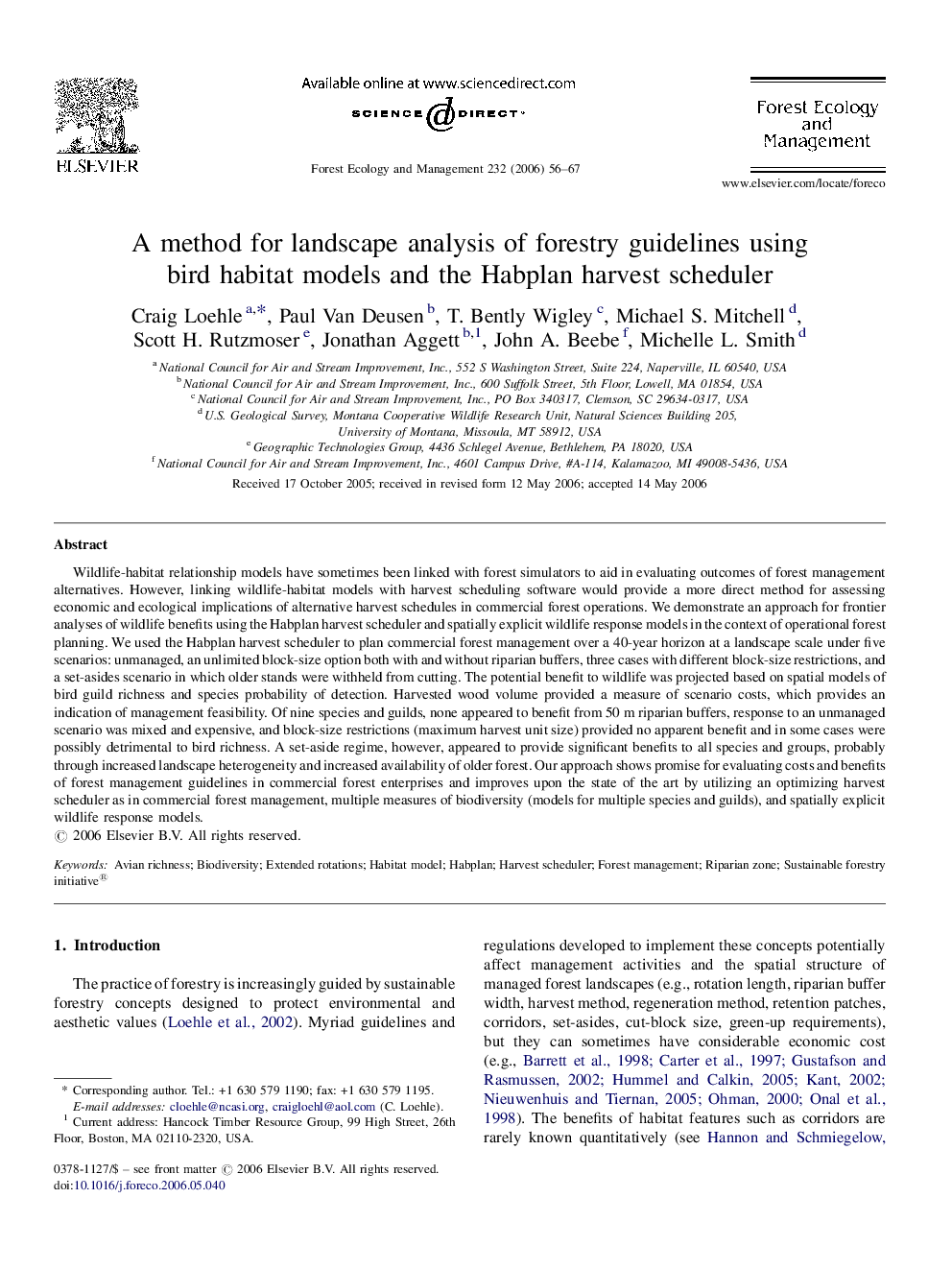| Article ID | Journal | Published Year | Pages | File Type |
|---|---|---|---|---|
| 90479 | Forest Ecology and Management | 2006 | 12 Pages |
Wildlife-habitat relationship models have sometimes been linked with forest simulators to aid in evaluating outcomes of forest management alternatives. However, linking wildlife-habitat models with harvest scheduling software would provide a more direct method for assessing economic and ecological implications of alternative harvest schedules in commercial forest operations. We demonstrate an approach for frontier analyses of wildlife benefits using the Habplan harvest scheduler and spatially explicit wildlife response models in the context of operational forest planning. We used the Habplan harvest scheduler to plan commercial forest management over a 40-year horizon at a landscape scale under five scenarios: unmanaged, an unlimited block-size option both with and without riparian buffers, three cases with different block-size restrictions, and a set-asides scenario in which older stands were withheld from cutting. The potential benefit to wildlife was projected based on spatial models of bird guild richness and species probability of detection. Harvested wood volume provided a measure of scenario costs, which provides an indication of management feasibility. Of nine species and guilds, none appeared to benefit from 50 m riparian buffers, response to an unmanaged scenario was mixed and expensive, and block-size restrictions (maximum harvest unit size) provided no apparent benefit and in some cases were possibly detrimental to bird richness. A set-aside regime, however, appeared to provide significant benefits to all species and groups, probably through increased landscape heterogeneity and increased availability of older forest. Our approach shows promise for evaluating costs and benefits of forest management guidelines in commercial forest enterprises and improves upon the state of the art by utilizing an optimizing harvest scheduler as in commercial forest management, multiple measures of biodiversity (models for multiple species and guilds), and spatially explicit wildlife response models.
